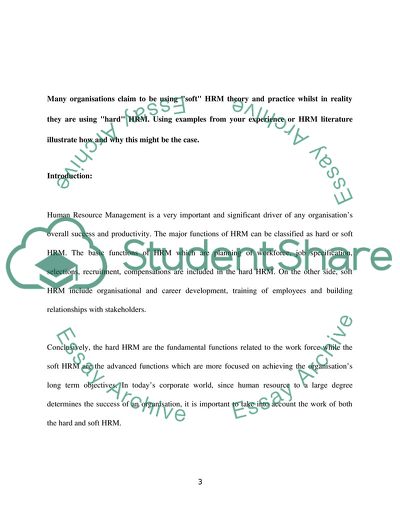Cite this document
(Human Resource Management Case Study Example | Topics and Well Written Essays - 1750 words, n.d.)
Human Resource Management Case Study Example | Topics and Well Written Essays - 1750 words. https://studentshare.org/human-resources/1743740-many-organisations-claim-to-be-using-soft-hrm-theory-and-practice-whilst-in-reality-they-are-using-hard-hrm-using-examples-from-your-experience-or-hrm-literature-illustrate-how-and-why-this-might-be-the-case
Human Resource Management Case Study Example | Topics and Well Written Essays - 1750 words. https://studentshare.org/human-resources/1743740-many-organisations-claim-to-be-using-soft-hrm-theory-and-practice-whilst-in-reality-they-are-using-hard-hrm-using-examples-from-your-experience-or-hrm-literature-illustrate-how-and-why-this-might-be-the-case
(Human Resource Management Case Study Example | Topics and Well Written Essays - 1750 Words)
Human Resource Management Case Study Example | Topics and Well Written Essays - 1750 Words. https://studentshare.org/human-resources/1743740-many-organisations-claim-to-be-using-soft-hrm-theory-and-practice-whilst-in-reality-they-are-using-hard-hrm-using-examples-from-your-experience-or-hrm-literature-illustrate-how-and-why-this-might-be-the-case.
Human Resource Management Case Study Example | Topics and Well Written Essays - 1750 Words. https://studentshare.org/human-resources/1743740-many-organisations-claim-to-be-using-soft-hrm-theory-and-practice-whilst-in-reality-they-are-using-hard-hrm-using-examples-from-your-experience-or-hrm-literature-illustrate-how-and-why-this-might-be-the-case.
“Human Resource Management Case Study Example | Topics and Well Written Essays - 1750 Words”. https://studentshare.org/human-resources/1743740-many-organisations-claim-to-be-using-soft-hrm-theory-and-practice-whilst-in-reality-they-are-using-hard-hrm-using-examples-from-your-experience-or-hrm-literature-illustrate-how-and-why-this-might-be-the-case.


